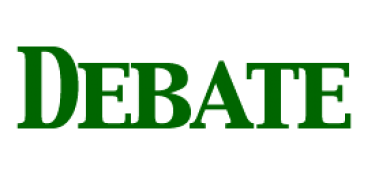Right-Sizing Your Marketing Infrastructure
Go big or go home. (- ubiquitous)
I first heard the quote above in 2001. It was a company mantra introduced by a new CEO who had been brought in to save our ailing company, one of the many beneficiaries, and subsequent victims, of the dot-com bubble. Four months later the firm shut its doors. We went home.
If the major marketing automation software companies had their way, you’d be convinced that until you invest in a robust and comprehensive automation platform—until you "go big"—your firm isn’t serious about B2B marketing. But investing heavily in any infrastructure to automate processes that do not demand such automation can be putting the cart before the horse. And so it goes with the entire ecosystem of marketing infrastructure—from content management systems (CMS) to social media management and monitoring solutions to analytics packages.
Companies like HubSpot—an indisputable heaver hitter in the world of marketing automation software—have done an incredible job of educating the masses on the potential benefits of inbound marketing. But there's an indisputable, albeit understandable, bias in the propaganda of just about every software maker out there that their tools are your starting point for success.
The Often Overstated Value of “Big”
I can tell you from experience that technology is not alone a solution for less-than-stellar marketing results. What's more, shiny tools can even distract marketers from high-value activities like content development.
Can marketing automation help make a good program more effective? Yes. Can a CMS upgrade help improve the efficiency and output of a good team? Right again. So don’t get me wrong. Technology can not only, in the right circumstances, increase marketing ROI, it is at times indispensable for company growth.
The problem I often see is that technology—and the market hype cultivated by the tremendous resources that are spent by the companies who sell highly-evolved and full-featured software platforms—lead many to think that it’s somehow fundamental to modern digital marketing. I disagree.
A Review of Marketing Fundamentals
What’s fundamental to effective digital marketing is compelling content. And great content is a product of leadership’s dedication toward leveraging resources inside and outside of the firm to better understand its audience and to creating content that speaks to that audience's needs, consistently, over the long haul.
What’s fundamental is reaching an audience. And reach, in a digital marketing context, is in part a product of thoughtfully planned and executed keyword inclusion and basic SEO best practices.
What’s fundamental is the conversion. And online conversions are a product of well-placed offers, clear and concise copy and effective calls to action.
What’s fundamental is the follow up. And following up with interested prospects is more a product of organization and discipline than it is dependent on automated lead scoring and integration with CRM.
Too Big, or Too Small?
The obvious point is that some companies have no business biting off big powerful software to support their marketing effort. Likewise, professional services firms who seem to have mastered the fundamentals, who have through years of dedication managed to transform their website into an effective source of new sales leads, should not avoid committing to an investment in automation because they can’t stomach spending money on software that they don’t understand. While I commend and even relate to the skepticism these firms' leaders exhibit, infrastructure that fits poorly—whether "too big" or "too small"—carries a cost.
Crawl. Walk. Run.
As I've recently articulated in Digett's Disruption Roadmap, there's a natural evolution to digital transformation of a professional services firm. Tier 1, often a firm's first foray into digital marketing, doesn't depend on full-featured marketing automation tools. Rather, there's an emphasis on the fundamentals of a sound marketing strategy incorporating basic tool sets. What some may not understand is just how much power a number of inexpensive tools can provide to support an effective content marketing effort. CampaignMonitor and Mailchimp, two of Digett's most beloved choices of email marketing platforms, do not try to tackle lead scoring, a potentially valuable capability for improving effectiveness related to signaling when prospects who have demonstrated interest in a firm's services warrant some sort of personal contact. But lead scoring is most valuable when there are too many sales leads to manage with a spreadsheet. This is likely not the case in the early stages of a digital marketing effort.
As internal marketing competencies in a professional services firm mature, so grows the potential for improving overall marketing ROI through leveraging more sophisticated technology. The automation suites Digett is most familiar with—HubSpot, Pardot, Marketo and Act-On, for example—offer advantages related not only to breadth of features, but to how they consolidate marketing activities—which may otherwise be spread across four or five SaaS-based services—into a single interface. Email marketing and nurturing, lead scoring, landing page creation and testing, and social media monitoring are examples of different capabilities that could each be handled by a different individual tool, or which could all be handled by any one of the automation offerings mentioned. Consolidation results in increased convenience, efficiency, and in some cases better data about your prospects' behavior.
With Great Power Comes Great Responsibility
With power comes complexity, and some firms just aren't prepared for the learning curve presented by these capable tools. Managing the marketing technology stack is one area where agencies like Digett can provide great value. Not only can an agency hit the ground running to immediately leverage the extensive feature sets of sophisticated martech (please pardon the jargon) tools, quality agencies understand just how such capabilities can be employed for their greatest gain.
The bottom line is that professional services marketers should focus first on fundamentals, and consider employing newer or more powerful technology only when there is a clear advantage to be gained by doing so. Despite technology hype, there is wisdom in a "crawl, walk, run" philosophy.
MONTHLY MARKETING INSIGHTS.
Get thought-provoking and actionable insights to improve how your firm makes a connection with your customers.






LEAVE A COMMENT